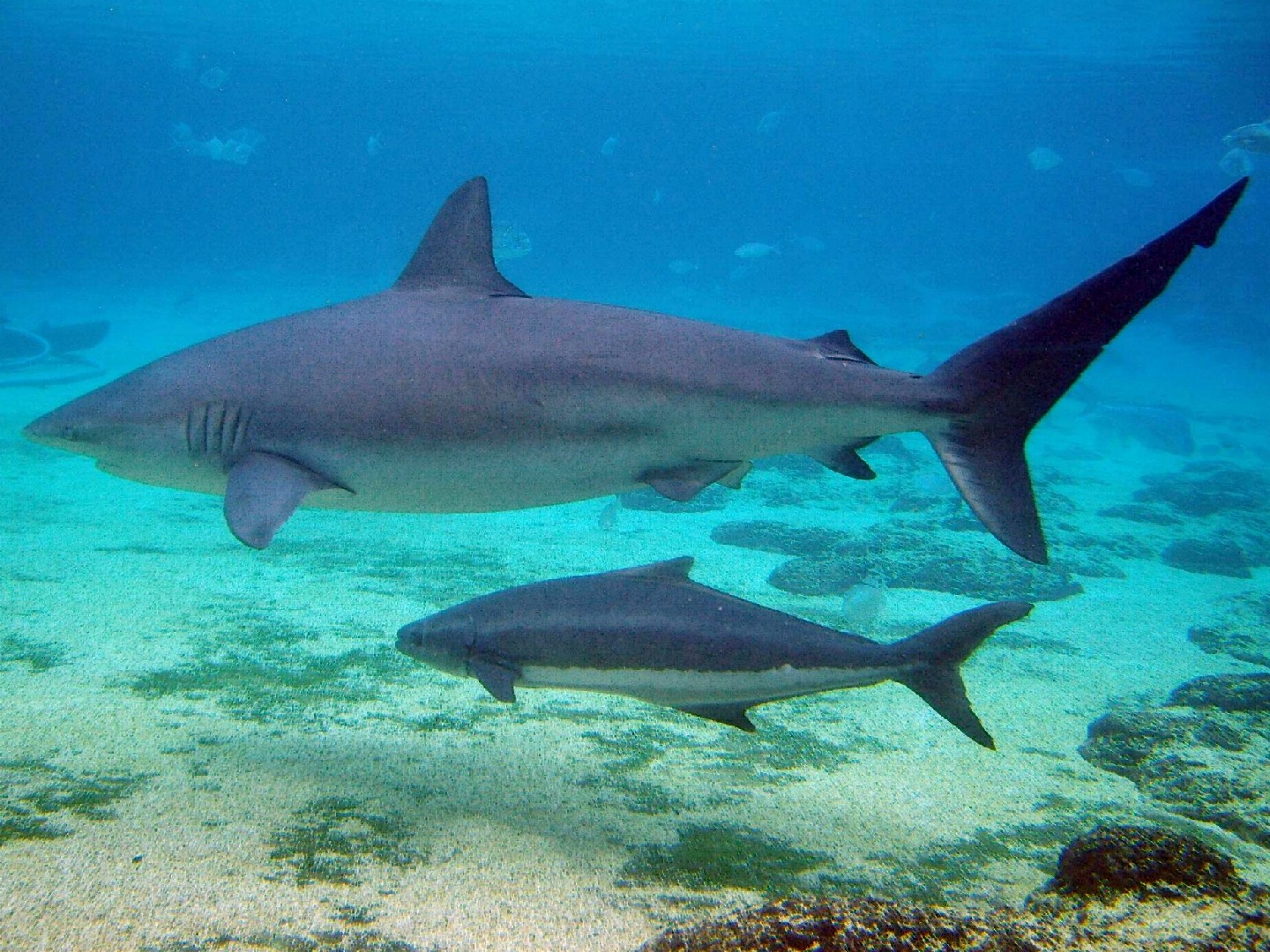Dusky shark
A species of Carcharhinus, Also known as Bay shark, Brown dusky shark, Dusky whaler, Dusky ground shark Scientific name : Carcharhinus obscurus Genus : Carcharhinus
Dusky shark, A species of Carcharhinus
Also known as:
Bay shark, Brown dusky shark, Dusky whaler, Dusky ground shark
Botanical name: Carcharhinus obscurus
Genus: Carcharhinus
Content
Description People often ask
 Photo By Happy Little Nomad , used under CC-BY-SA-2.0 /Cropped and compressed from original
Photo By Happy Little Nomad , used under CC-BY-SA-2.0 /Cropped and compressed from original Description
The dusky shark can be identified by its sickle-shaped first dorsal and pectoral fins, with the former positioned over the rear tips of the latter Upper and lower teeth One of the largest members of its genus, the dusky shark commonly reaches a length of 3.2 m (10 ft) and a weight of 160–180 kg (350–400 lb); the maximum recorded length and weight are 4.2 m (14 ft) and 347 kg (765 lb) respectively. Females grow larger than males. This shark has a slender, streamlined body with a broadly rounded snout no longer than the width of the mouth. The nostrils are preceded by barely developed flaps of skin. The medium-sized, circular eyes are equipped with nictitating membranes (protective third eyelids). The mouth has very short, subtle furrows at the corners and contains 13-15 (typically 14) tooth rows on either side of both jaws. The upper teeth are distinctively broad, triangular, and slightly oblique with strong, coarse serrations, while the lower teeth are narrower and upright, with finer serrations. The five pairs of gill slits are fairly long. The large pectoral fins measure around one-fifth as long as the body, and have a falcate (sickle-like) shape tapering to a point. The first dorsal fin is of moderate size and somewhat falcate, with a pointed apex and a strongly concave rear margin; its origin lies over the pectoral fin free rear tips. The second dorsal fin is much smaller and is positioned about opposite the anal fin. A low dorsal ridge is present between the dorsal fins. The caudal fin is large and high, with a well-developed lower lobe and a ventral notch near the tip of the upper lobe. The dermal denticles are diamond-shaped and closely set, each bearing five horizontal ridges leading to teeth on the posterior margin. This species is bronzy to bluish gray above and white below, which extends onto the flanks as a faint lighter stripe. The fins, particularly the underside of the pectoral fins and the lower caudal fin lobe) darken towards the tips; this is more obvious in juveniles.
* Disclaimer: The judgment on toxicity and danger is for reference only. We DO NOT GUARANTEE any accuracy of such judgment. Therefore, you SHALL NOT rely on such judgment. It is IMPORTANT TO SEEK PROFESSIONAL ADVICE in advance when necessary.
People often ask
Are dusky shark dangerous?
Do dusky shark attack humans?
What does the dusky shark eat?
Scientific Classification
Phylum
Chordates Class
Sharks and rays Order
Ground sharks Family
Requiem sharks Genus
Carcharhinus Species
Dusky shark